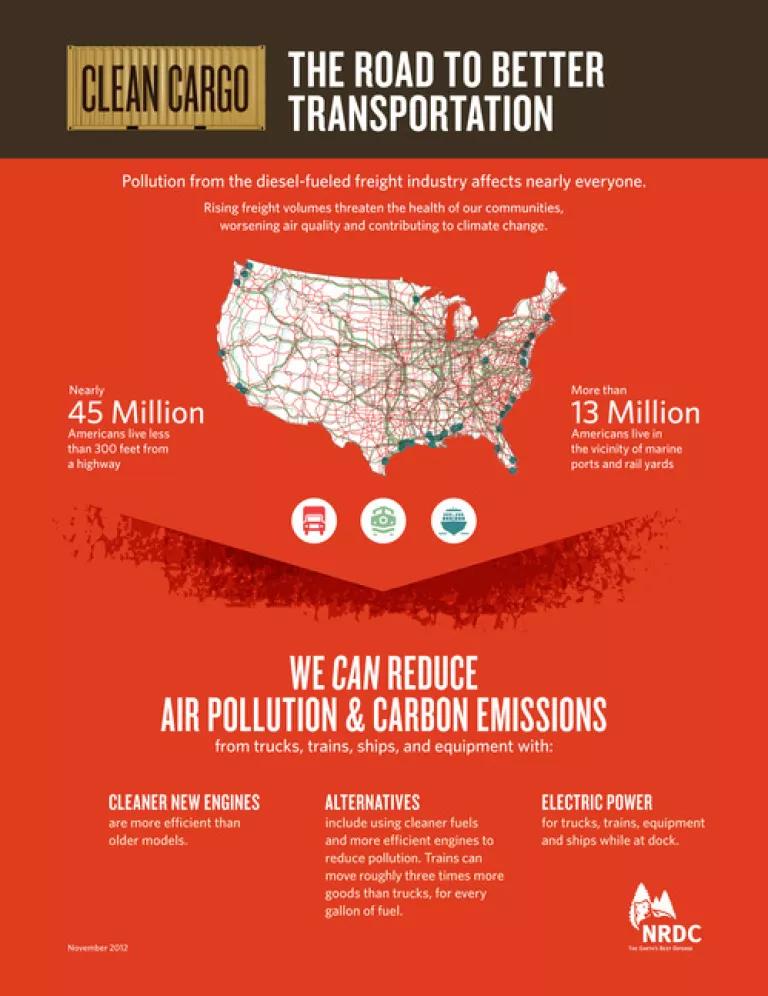
NRDC recently wrote two new community guides that we hope will be a resource for communities across the country concerned about the harmful air pollution from the transportation of freight. These toolkits are designed to assist communities, and give them helpful info and suggests strategies to take meaningful steps to reduce diesel pollution in their neighborhoods.
The two new guides—Defend Your Air: A guide for reducing freight transportation air pollution under the National Environmental Policy Act (NEPA) and Clean Cargo: A guide to reducing diesel air pollution from the freight industry in your community—are available on NRDC’s new Clean Cargo Center website.
- Defend Your Air explains NEPA’s requirements and is designed to help community members and organizations participate in the NEPA process as a strategy to reduce air pollution if a new rail yard, port terminal, or expansion project is proposed in their community. It includes practical tips on how to write a comment letter, how to analyze an environmental study, and how to catch mistakes in an agency’s environmental analysis.
- Clean Cargo discusses details about the health effects from freight transportation emissions, and recommends measures that can clean up freight operations, including real life examples.
More than 13 million Americans—3.5 million of whom are children—live near a major marine port or rail yard. Nearly 45 million Americans live less than 300 feet from a freeway. All of these communities breathe the polluted air that comes from the diesel-powered ships, trains, and trucks that move cargo through our ports, rail yards, warehouses, and freeways.
The good news is that there are technologies available to help reduce this air pollution. And there is a federal law—the National Environmental Policy Act—that requires that if a government action might significantly impact the quality of the human environment, then the government has to first figure out what those impacts would be and release a study explaining those impacts to the public. The public can participate in this process and submit comments on the government’s study.
Unfortunately, federal agencies do not always fully comply with this important law. Agencies have been known to cut corners, sweep things under the rug, and ignore how its actions could harm people and the environment. Federal agencies supporting the building of new freight transportation projects or the expansion of existing ones, such as rail yards or port terminals, also often do not utilize available technologies that would reduce the air pollution spewed into local communities.
We hope that our new community guides can help local communities—across the country—fight to reduce toxic pollution from freight transportation.
We can send hard copies of the guides to anyone that is interested—please let us know if you would like some hard copies for yourself or your community.



